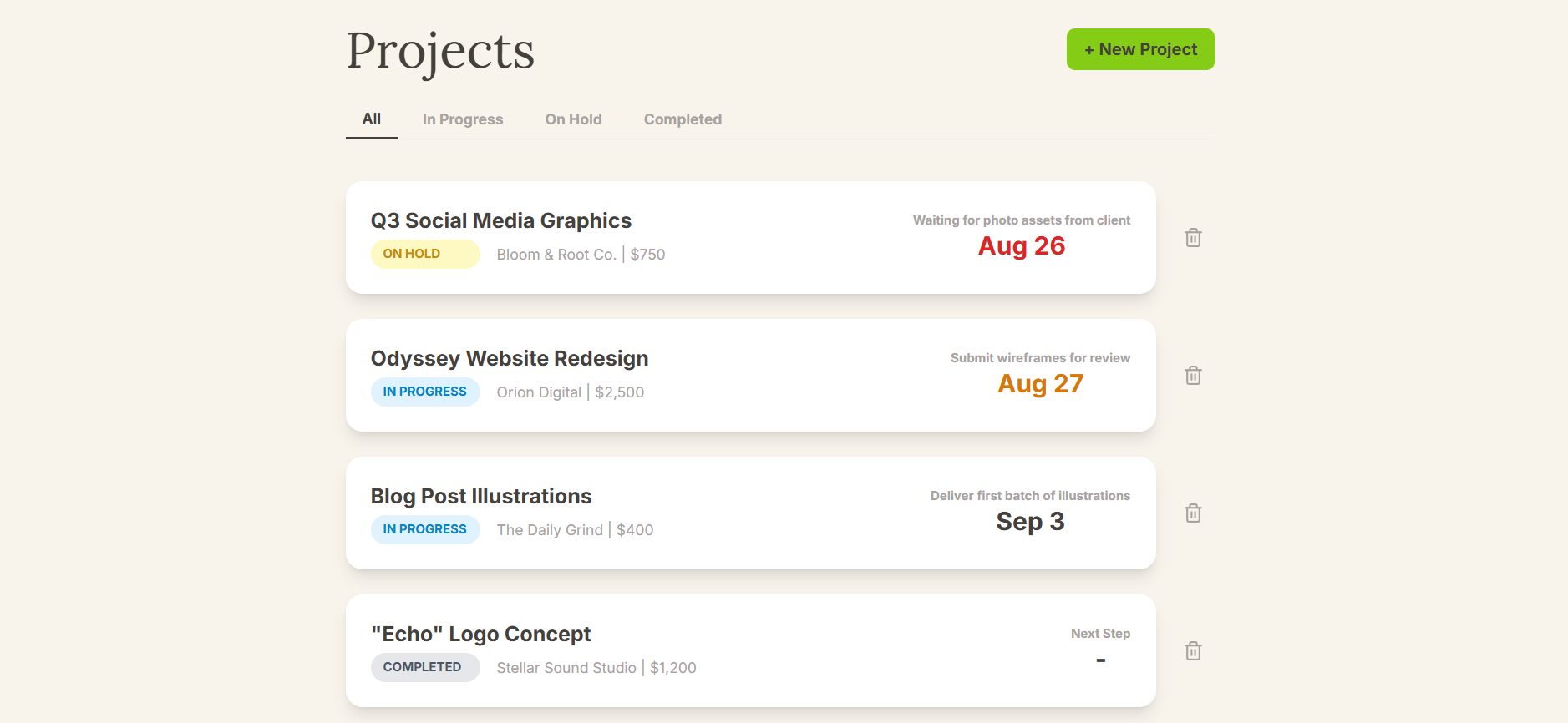September 19, 2025
How to Professionally Follow Up With a Client (Templates for Every Situation)
Silence. You’ve sent the work, submitted the invoice, asked a critical question... and now, nothing. Every minute of that silence fuels a familiar anxiety: "Am I being too pushy? Are they unhappy with my work? Am I annoying them?"
This fear of following up is one of the biggest sources of stress for freelancers, causing them to lose money, control, and confidence. But what if you could reframe it? A professional follow-up isn't nagging; it's a core part of project management. This guide will give you the mindset and the exact templates you need to follow up with confidence every single time.
The Golden Rule of Following Up: It's Not Personal, It's Process
Here’s the mindset shift that changes everything: You are not "asking for something." You are "managing a process." A follow-up is the sign of an organized professional, not a desperate one.
Confidence comes from facts, not feelings. The most powerful follow-ups are based on a clear, documented record. This is why it's so critical to have a system for keeping track of all your client projects. When you have a log of decisions and timelines, your message shifts from a weak "Just checking in..." to a confident "As per our plan, the next step is..."
Templates for 3 Common (and Awkward) Situations
Let's dive into the practical, copy-paste solutions for the moments that make freelancers the most nervous.
Situation #1: The Overdue Invoice
The Context: The payment due date has passed, and your invoice remains unpaid.
First, ensure you have a clear system to track the status of every invoice. Once you're certain it's overdue, use this gentle, professional template.
Subject: Gentle Reminder: Invoice #123
Hi [Client Name],
Hope you're having a great week.
This is a friendly reminder that invoice #123 was due for payment on [Due Date]. I've attached another copy for your convenience.
Please let me know if you have any questions.
Best, [Your Name]
Situation #2: The Feedback Black Hole
The Context: You've submitted a design, a document, or a piece of work for review, and you need feedback to proceed.
Subject: Checking in on the [Deliverable Name]
Hi [Client Name],
Just wanted to quickly check in and make sure you received the [e.g., draft of the homepage design] I sent over on [Date].
Is there anything I can clarify or any questions I can answer to make the feedback process easier for you?
Best, [Your Name]
Situation #3: The Post-Proposal Ghost
The Context: You had a great initial call, sent over a detailed proposal, and the client has gone quiet.
Subject: Following up on our conversation
Hi [Client Name],
I'm just following up on the proposal I sent over last [Day of the week].
No pressure at all, but I wanted to check if you had any initial questions I could answer as you review it.
Best, [Your Name]
The Best Follow-Up: The One You Don't Have to Send
The most effective way to handle awkward follow-ups is to make them unnecessary in the first place. Proactive communication is the ultimate prevention.
This is precisely why sending a clear and concise weekly client report is so powerful. When your client gets a regular update on your progress, plans, and any roadblocks, their questions are answered before they even think to ask them. They don't go quiet, because you never give them a reason to.
How Jornl Gives You Follow-Up Superpowers
Confidence in your follow-up comes from having your information in order. When the entire history of a project—every deadline, every decision—is in one calm, organized place, you eliminate self-doubt.
![A side-by-side image showing a detailed project log in Jornl on the left, which is used to write a professional and confident follow-up email to a client on the right.]
Instead of writing a vague "Just wanted to see what's happening," you can open Jornl and write with precision: "Hi [Client Name], as we discussed on our call Tuesday (noted in our project log), I'm scheduled to receive the final text this week. Is that still on track?"
Do you feel the difference? One is a question from a place of uncertainty. The other is a confident inquiry from a professional who is in control of the process.
Conclusion
Stop thinking of the follow-up as a source of stress and start seeing it as a professional tool. Base your communication on your records, be polite but clear, and remember that you are managing a process.
To ensure you always have a reliable source of truth for every email you send, try Jornl. It’s the calm, organized hub designed to give you the control and confidence you need to communicate like a pro.
